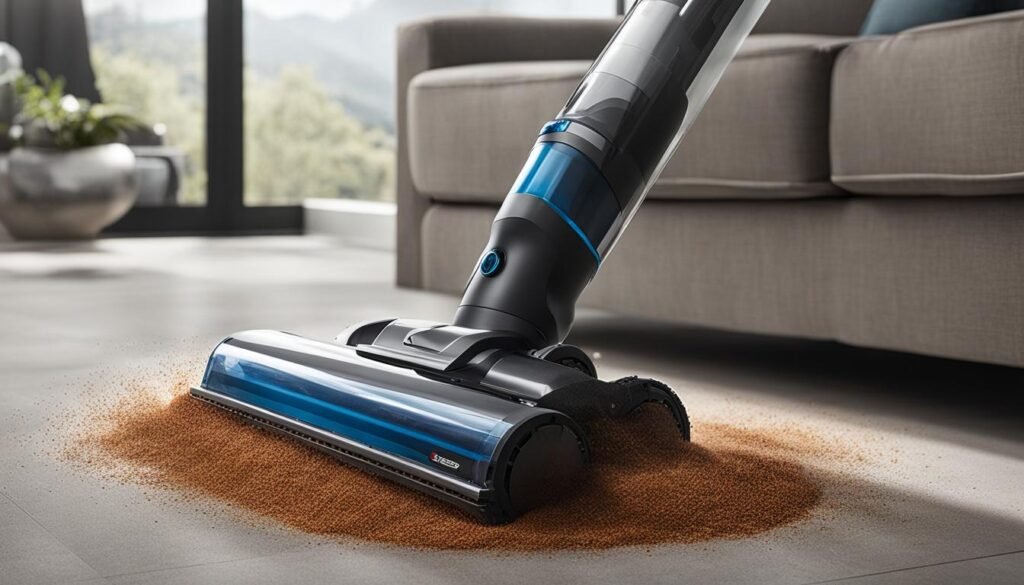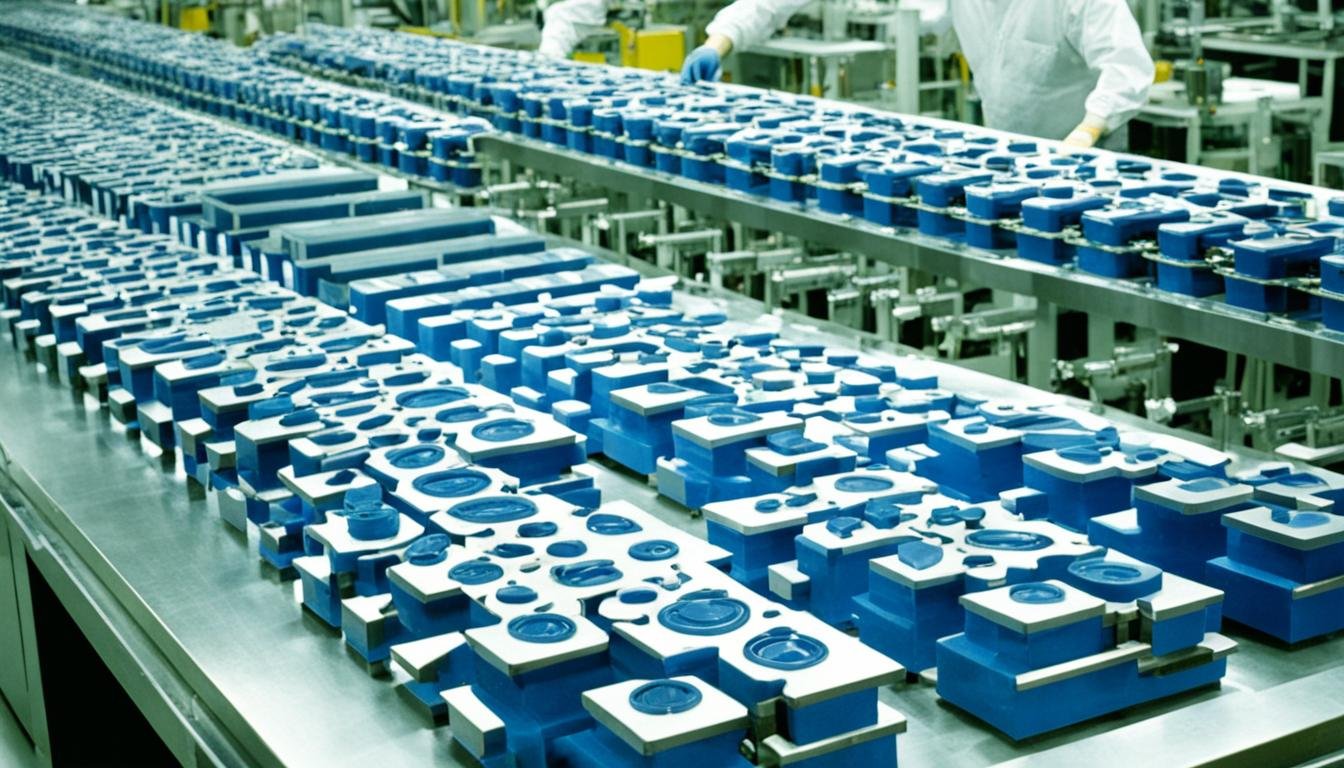Greetings! Today, I will take you on a fascinating journey into the manufacturing process of vacuum cleaners. Have you ever wondered how these essential cleaning tools come to life? Well, let me walk you through the intricate steps involved in creating these powerful devices.
Vacuum cleaner production begins with meticulous planning and design. Using computerized systems, engineers develop the precise specifications and dimensions for the various components that make up a vacuum cleaner. These components are primarily made from durable plastics, each playing a vital role in the machine’s functionality.
Next comes the process of injection molding. Plastic pellets are carefully selected and melted down to create a molten plastic solution. This solution is then injected into steel molds, which give the plastic its desired shape. Once cooled, the molds are opened, and the hardened plastic parts are released. These parts are stored in bins until they are ready to be assembled.
When it’s time for assembly, the plastic parts are brought to the production line, where skilled technicians meticulously put them together. This careful and intricate process ensures that each vacuum cleaner is crafted with precision and attention to detail, guaranteeing functionality and durability.
Key Takeaways:
- The manufacturing process of vacuum cleaners involves meticulous planning, design, and injection molding using durable plastics.
- Computerized systems play a crucial role in designing and shaping the components of a vacuum cleaner.
- Skilled technicians assemble the plastic parts to create fully functional and durable vacuum cleaners.
- The production process ensures that each vacuum cleaner is crafted with precision and attention to detail.
- Injection molding allows for the mass production of consistent and high-quality plastic parts.
The Evolution of Vacuum Cleaners
The history of vacuum cleaners is an intriguing journey that showcases the innovation and progress made in the field of cleaning technology. From the humble beginnings of manual carpet cleaning to the advanced designs we see today, vacuum cleaners have come a long way. Let’s explore the fascinating evolution of these essential household devices.
In the mid-19th century, when cleaning carpets involved arduous manual labor with beaters and brushes, the need for a more efficient cleaning solution became evident. This led to the invention of the first mechanical device for cleaning rugs in the 1840s.
“The early carpet sweeper, with its rotating brushes, revolutionized the way dirt and debris were removed from carpets,” said James Smith, a cleaning technology historian.
The carpet sweeper used the power of rotation to lift and trap dirt, making it easier for people to maintain cleanliness in their homes. This initial innovation laid the foundation for future vacuum cleaner designs.
As the years went by, inventors continued to refine and improve upon the concept of carpet sweepers. In 1869, Ives W. McGaffey patented the first manual vacuum cleaner, which featured a hand crank and a bag to collect dust and dirt.
However, it wasn’t until the early 20th century that electric-powered vacuum cleaners started to gain popularity. These machines introduced mechanical suction, utilizing motor-driven fans to create a powerful airflow that sucked in dirt and debris.
The First Electric Vacuum Cleaner
In 1901, British engineer Hubert Cecil Booth invented the first motorized vacuum cleaner. His design incorporated both suction and mechanical beaters for a more efficient cleaning process.
“Booth’s vacuum cleaner was a breakthrough in the industry, combining suction power with rotating brushes to effectively clean carpets,” said Sarah Thompson, a cleaning technology expert.
This innovative design paved the way for future vacuum cleaner models, incorporating improvements in suction power, filtration systems, and maneuverability.
Today, vacuum cleaners come in a wide range of designs, from upright and canister to robotic and handheld. They feature advanced technologies such as HEPA filters for improved air quality and ergonomic designs for ease of use.
With each passing year, vacuum cleaner manufacturers strive to enhance performance, efficiency, and user experience. As technology continues to advance, we can expect to see even more innovative designs and features in the future.
| Decade | Key Milestones |
|---|---|
| 1840s | Invention of the first mechanical device for cleaning rugs |
| 1869 | Patent for the first manual vacuum cleaner |
| 1901 | Development of the first motorized vacuum cleaner by Hubert Cecil Booth |
| 21st century | Introduction of advanced technologies and designs in vacuum cleaners |
How Vacuum Cleaners Work
A vacuum cleaner works by utilizing a combination of key mechanisms to ensure effective cleaning. These mechanisms include suction power, air filtration, and the use of a vacuum cleaner bag.
The suction power of a vacuum cleaner is vital in its ability to remove dirt and debris from various surfaces. This power is generated by a rotating fan inside the vacuum cleaner, which creates a low-pressure area. As a result, air is drawn in through the intake port of the vacuum cleaner, carrying dirt and debris along with it.
To maintain efficient operation and to prevent particles from being released back into the air, vacuum cleaners employ air filtration systems. These systems are designed to capture and trap dust, allergens, and other airborne particles. Most modern vacuum cleaners feature high-efficiency particulate air (HEPA) filters, which can effectively trap small particles and allergens, ensuring cleaner indoor air quality.
“The suction power of a vacuum cleaner is vital in its ability to remove dirt and debris from various surfaces.”
Additionally, vacuum cleaners often incorporate a vacuum cleaner bag within their design. The bag acts as a container for collected dirt and debris, allowing for easy disposal. Vacuum cleaner bags are typically made from fabric or paper and are designed to capture and contain even the finest dust particles, preventing them from being released back into the air during operation.
Understanding how vacuum cleaners work can help you make an informed decision when selecting a vacuum cleaner that suits your cleaning needs. Whether you prioritize strong suction power, advanced air filtration, or convenient bag disposal, knowing the inner workings of a vacuum cleaner can guide you towards the right choice.

Conclusion
The manufacturing techniques used in the production of vacuum cleaners have undergone significant advancements over the years, resulting in more efficient and reliable products. One key innovation in vacuum cleaner manufacturing is the utilization of computerized design systems, which allow for precise and intricate designs of the various plastic components. These computerized systems streamline the production process and ensure consistent quality throughout.
Furthermore, injection molding has played a vital role in shaping the plastic parts of vacuum cleaners. This technique involves melting plastic pellets and injecting the molten material into steel molds, which are then opened to release the hardened plastic components. Injection molding offers numerous advantages, including increased production efficiency, cost-effectiveness, and the ability to create complex shapes and designs.
When it comes to materials, vacuum cleaner manufacturers have embraced high-quality options to enhance durability and performance. Many vacuum cleaners feature a base made from metal or molded plastic, which provides sturdiness and longevity. Additionally, various innovative materials are being incorporated to enhance essential components, such as brushes and filters, to optimize suction power and improve overall cleaning efficiency.
FAQ
How are vacuum cleaners made?
Vacuum cleaners are made through a manufacturing process that involves several steps. Plastic parts are designed using computerized systems and shaped using steel molds through injection molding. The plastic pellets are melted and poured into the molds, which are then opened to release the hardened plastic parts. These parts are stored in bins and brought to the assembly line when needed.
What is the history of vacuum cleaners?
The concept of vacuum cleaning dates back to the mid-19th century when carpet cleaning was done manually using beaters and brushes. The first mechanical device for cleaning rugs was invented in the 1840s, which evolved into the carpet sweeper. The carpet sweeper used rotating brushes to pick up dirt and debris. Over the years, vacuum cleaner designs and suction power have improved significantly.
How do vacuum cleaners work?
Vacuum cleaners work by creating a stream of air that carries dirt and debris from the intake port to the exhaust port. The suction is generated by a rotating fan inside the vacuum cleaner, which creates a low-pressure area and pulls the air and particles into the machine. Air filtration systems, such as vacuum cleaner bags or cyclonic technology, help capture and contain the collected dirt and allergens.
What are some important considerations in vacuum cleaner manufacturing?
Vacuum cleaner manufacturing techniques have advanced over the years, with computerized design systems and injection molding playing a crucial role in shaping the plastic parts. High-quality materials, such as metal or molded plastic for the base, are used to ensure durability and performance. Innovations in vacuum cleaner technology have also led to improvements in suction power, filtration systems, and overall efficiency.





Leave a Reply